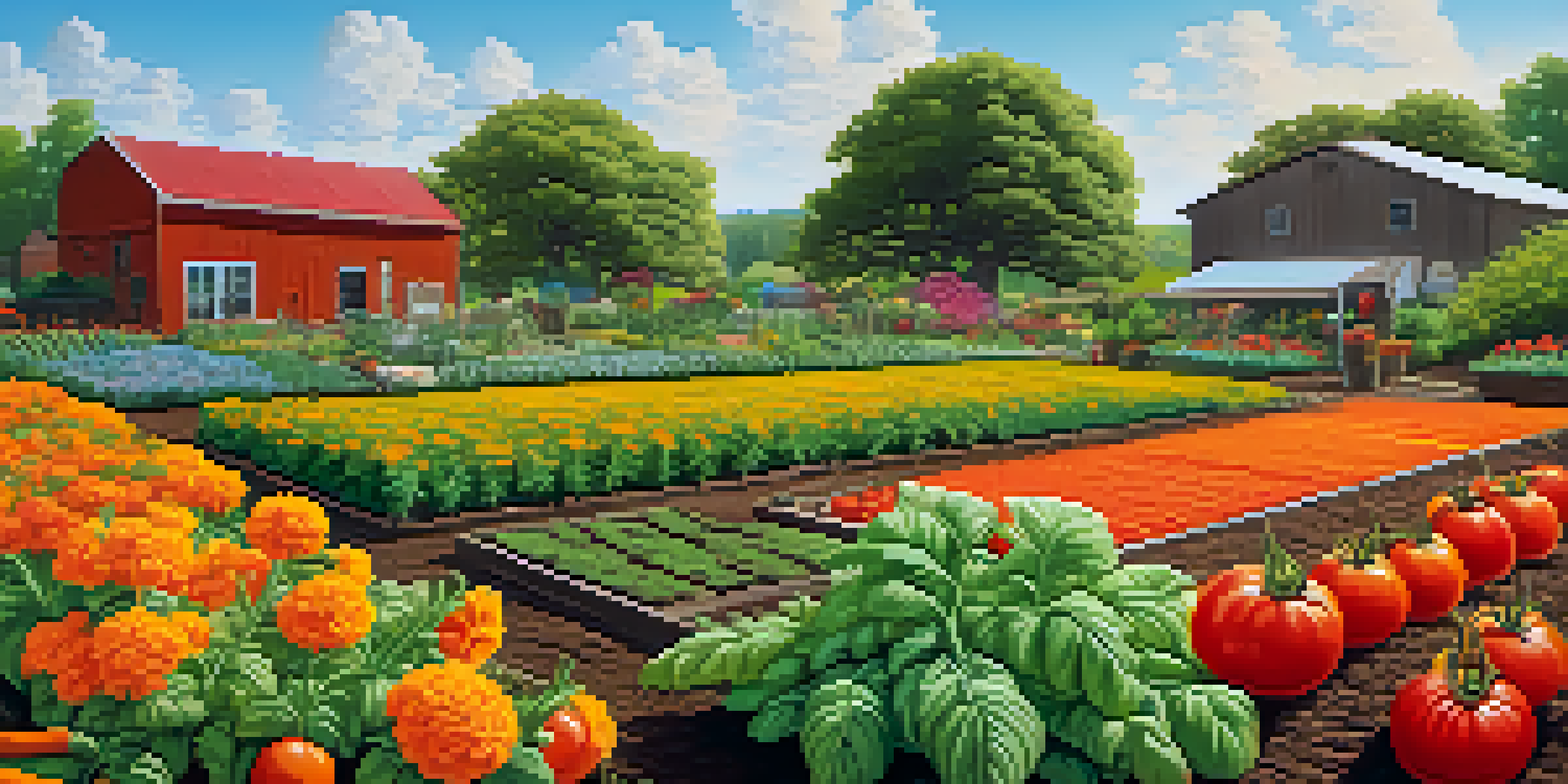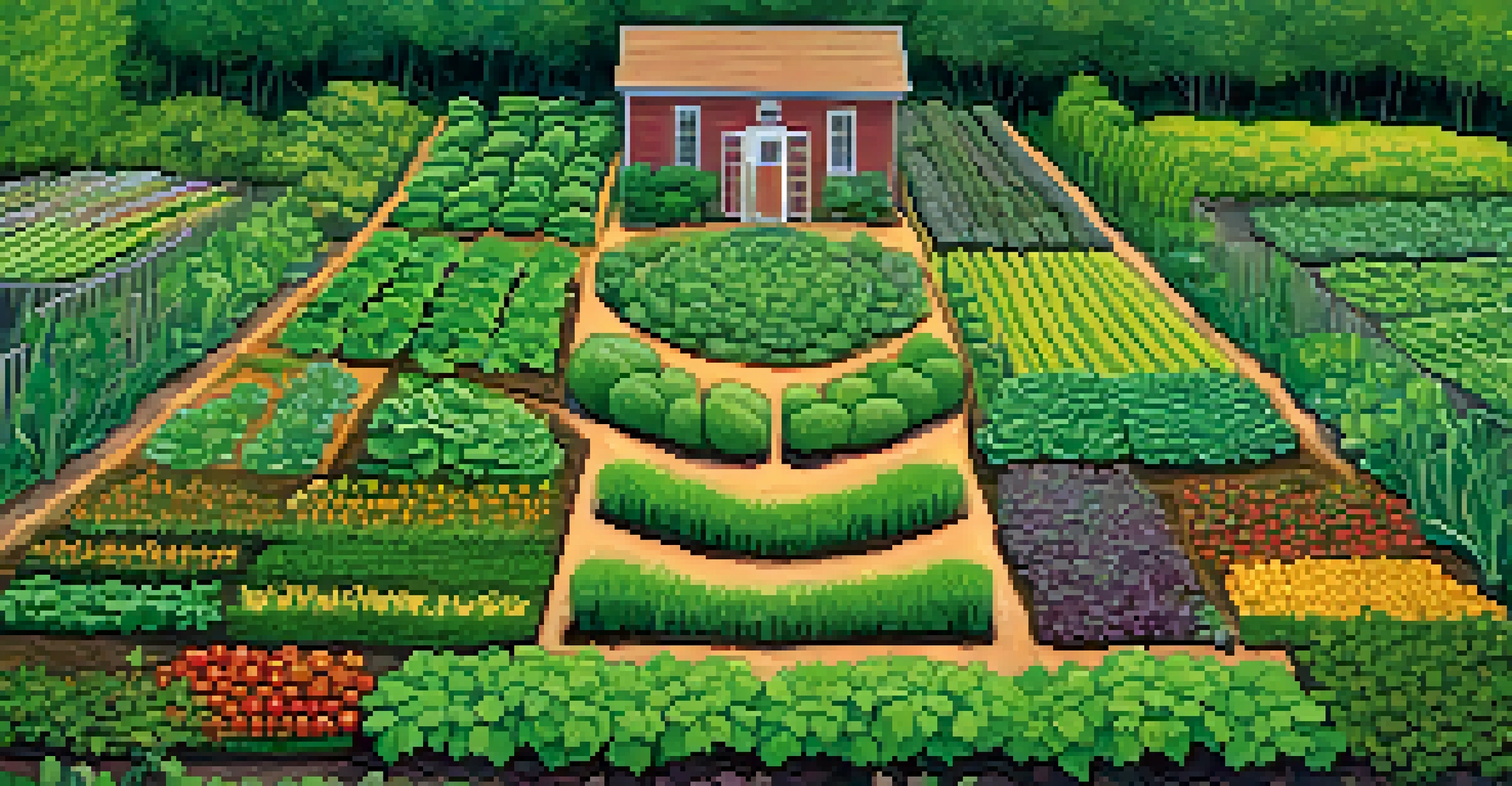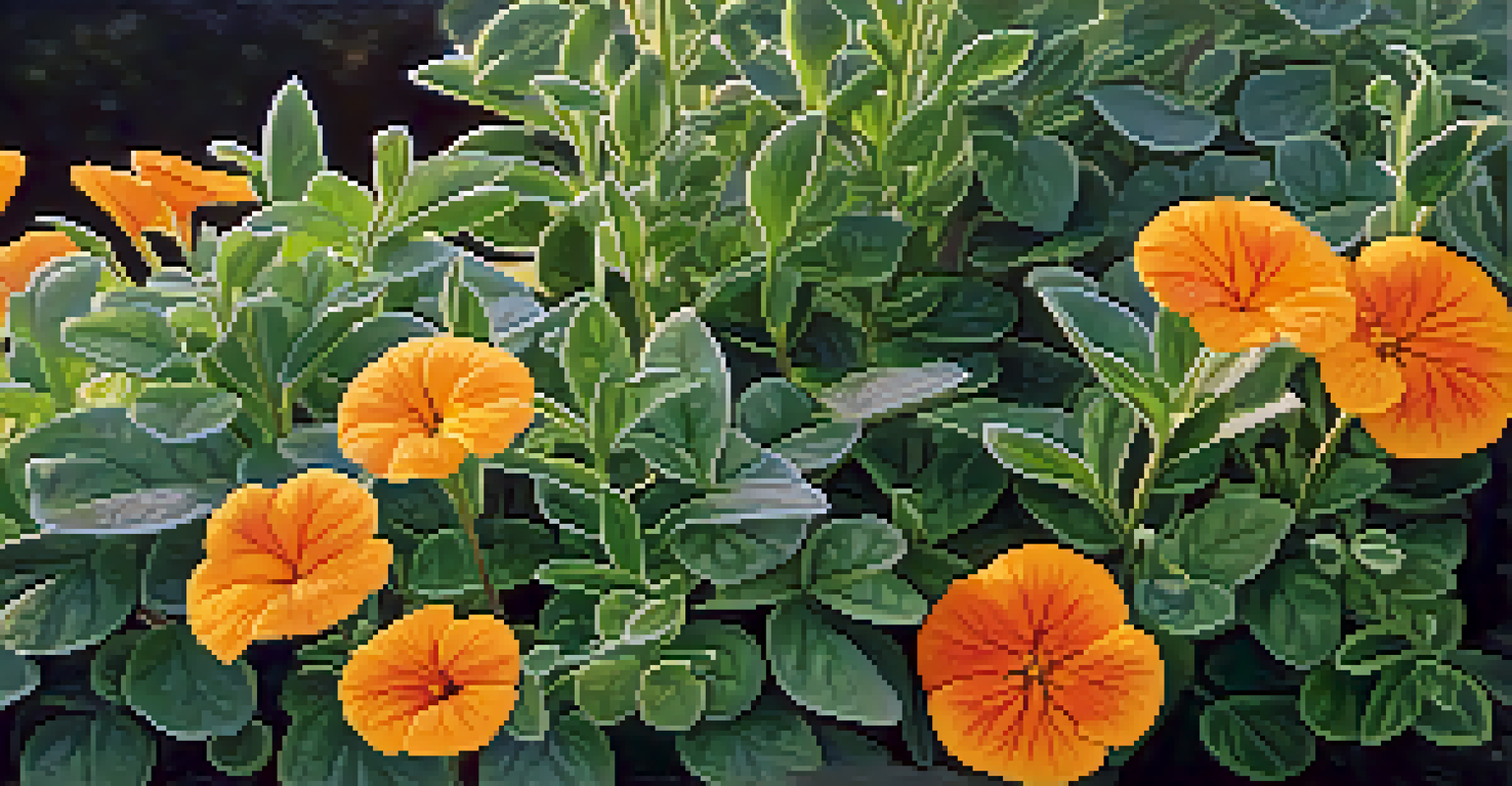Companion Planting: Best Combinations for Home Gardens

What is Companion Planting and Why It Matters
Companion planting is the practice of growing different plants together to enhance growth, deter pests, and improve flavor. Think of it as a gardening buddy system where plants work in harmony. For example, some plants can repel harmful insects while others attract beneficial ones, creating a balanced ecosystem in your garden.
The garden is a love song, a duet between a human and Mother Nature.
This method not only maximizes your garden space but also minimizes the need for chemical interventions, leading to a healthier environment. By understanding how plants interact, you can create a thriving space that supports biodiversity. It’s like hosting a dinner party where every guest complements the others!
Moreover, companion planting can also improve soil health and nutrient availability. Certain plants, like legumes, can fix nitrogen in the soil, which benefits neighboring plants. This natural synergy is a win-win for your garden!
Top Companion Planting Combinations for Vegetables
When it comes to vegetables, some partnerships are simply unbeatable. For instance, planting tomatoes alongside basil is a classic combo; basil not only enhances the flavor of tomatoes but also helps deter pests like aphids and hornworms. Imagine a culinary duo that not only tastes great but also protects each other!

Another great pairing is carrots and onions. Carrots can mask the scent of onions, making it harder for pests to locate them. This clever strategy allows both crops to thrive without the worry of pest interference, creating a harmonious culinary garden.
Companion Planting Enhances Growth
Growing different plants together can increase growth, deter pests, and improve flavor, creating a balanced garden ecosystem.
Lastly, consider the pairing of beans with corn. Beans fix nitrogen in the soil, which benefits the corn, while the corn provides a natural trellis for the beans to climb. It’s a perfect example of how cooperation can lead to abundant harvests!
Herbs That Thrive Together in the Garden
Herbs can be incredibly beneficial in companion planting, as they often enhance the growth and flavor of nearby plants. For example, rosemary and sage make an excellent pair; both thrive in similar conditions and can deter pests like cabbage moths. It’s like having two seasoned chefs in the kitchen, working together to create a flavorful dish!
Companion planting is a natural way to promote a healthy ecosystem in your garden.
Another fantastic combination is mint and cabbage. Mint can repel pests that target cabbage, making it a protective ally. Just be cautious with mint, as it can spread quickly, so consider planting it in pots to keep it contained.
Lastly, consider chives and carrots. Chives can help ward off carrot flies, giving your root veggies a fighting chance. This simple yet effective combination showcases how herbs can play a crucial role in a healthy garden ecosystem.
Flowers That Benefit Your Garden's Growth
Incorporating flowers into your garden can provide more than just beauty; they can also support your vegetable growth. For instance, marigolds are famous for their ability to repel nematodes and other pests, making them an essential companion for many crops. Think of marigolds as your garden's little soldiers, standing guard against intruders!
Another amazing flower to consider is nasturtium. It attracts aphids, keeping them away from your vegetables, and its edible blooms can add a peppery flavor to salads. They not only serve as a trap crop but also bring vibrant colors to your garden.
Know Plants That Pair Well
Some vegetable and herb combinations, like tomatoes with basil and carrots with onions, work together to maximize health and yield.
Additionally, sunflowers can offer vertical support for climbing plants like peas while attracting pollinators. This symbiotic relationship enhances the overall health of your garden and showcases how flowers can play a vital role in plant partnerships.
Plants to Avoid Pairing Together
While many plants can thrive together, some combinations can lead to disaster. For instance, planting potatoes near tomatoes can lead to increased risk of diseases like blight. It’s like inviting two unfriendly neighbors to the same party—things could get messy!
Another combination to steer clear of is corn and tomatoes. Both plants are heavy feeders and can compete for nutrients, leading to stunted growth. It’s essential to understand the needs of each plant to ensure a harmonious garden environment.
Lastly, avoid pairing carrots with dill. While both are great in the kitchen, dill can stunt the growth of carrots. Knowing which plants don’t play well together can save you time and frustration in your gardening journey.
The Role of Soil Health in Companion Planting
Soil health is fundamental to successful companion planting. Healthy soil provides the necessary nutrients and water that plants need to thrive, creating a robust environment for cooperation. Think of your soil as the foundation of a house; without a solid base, everything else can suffer.
To improve soil health, consider adding organic matter such as compost or well-rotted manure. This not only enhances nutrient content but also improves soil structure, allowing for better water retention and drainage. Healthy soil means healthier plants, which in turn can better support their companions.
Avoid Harmful Plant Pairings
Certain combinations, such as potatoes with tomatoes, can lead to diseases and competition for nutrients, so it's crucial to avoid them.
Additionally, rotating crops annually can help prevent nutrient depletion and reduce pest and disease buildup. By diversifying the types of plants you grow, you create a dynamic ecosystem that promotes resilience and sustainability.
Tips for Successful Companion Planting
To make the most of companion planting, start by researching which plants thrive together in your specific climate. Keep a gardening journal to track your successes and challenges, making it easier to refine your approach over time. It's like having a personal coach guiding you through your gardening journey!
Another important tip is to pay attention to the growth habits of each plant. Tall plants can shade shorter ones, so plan your garden layout accordingly. Understanding the needs of each plant helps to ensure that everyone gets enough sunlight and space.

Lastly, don't be afraid to experiment! Gardening is as much about trial and error as it is about knowledge. Over time, you’ll discover the best combinations that work for your unique garden, turning it into a vibrant and productive oasis.